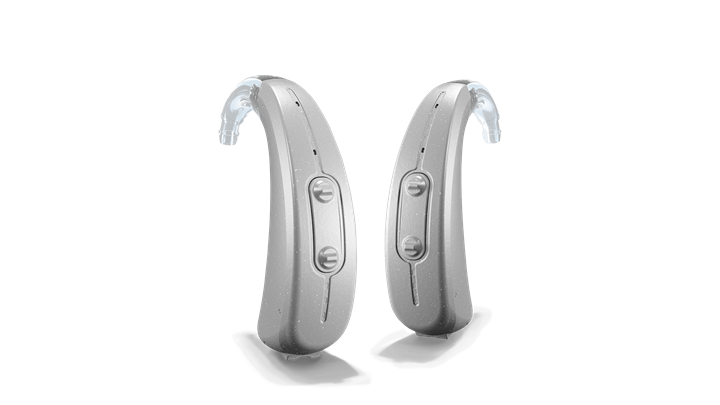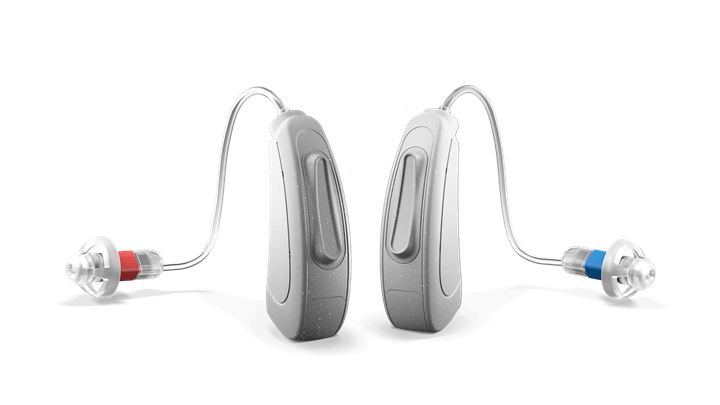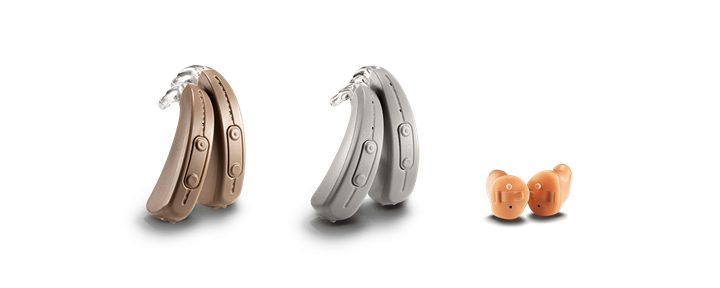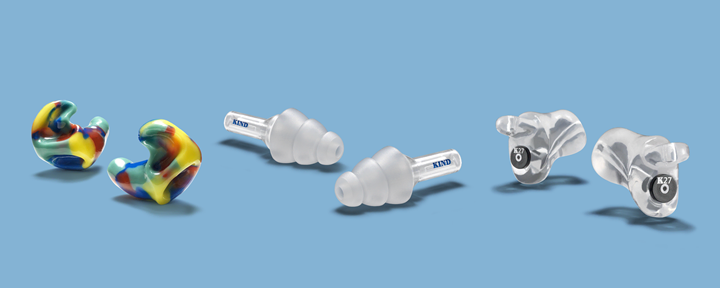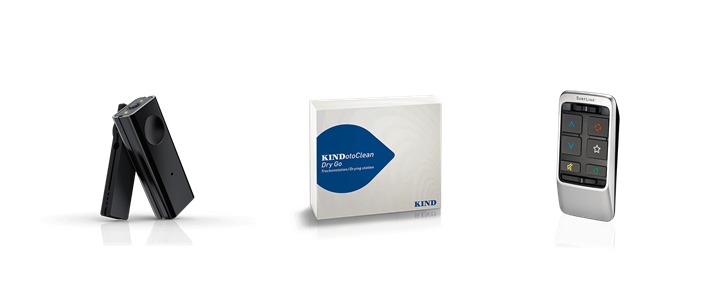Tinnitus - Hearing aids or mufflers can be helpful
Millions of people suffer from tinnitus. Tinnitus is an auditory perception that occurs, for example, as whistling or hissing. It is not a disease, but a symptom that can have various causes. That is why it is particularly important to consult a specialist. Based on his diagnosis, hearing aids or a noiser can be used to help treat tinnitus. Your KIND hearing expert will advise you on tinnitus and inform you about the choice of devices, while the ENT specialist will take care of the diagnosis and therapy.
Tinnitus can occur with or without hearing loss. For both cases KIND offers you the appropriate fitting. Your KIND audiologist will be happy to advise you on your individual needs.
In our KIND branches you will receive comprehensive advice on the subject of tinnitus. Our hearing aid acousticians will inform you about causes, treatment options and therapy-supporting devices. Thus you are optimally prepared for the consultation with your doctor.
The KIND hearing and tinnitus training is based on comprehensive individual consultation in our KIND branches. In the course of the consultation, you will also receive a practice brochure and sound samples to strengthen and support you in dealing with your hearing loss or diagnosed tinnitus.
How does sound therapy work?
A tinnitus retraining therapy aims to change the perception of tinnitus. Noise therapy is a central element of this. A tone generator, which produces a white noise, increases the acoustic background information. This noise is broadband, i.e. it includes all frequencies. The volume is set so low that the brain perceives the noise almost subconsciously. The tinnitus should still be perceptible. The brain registers this insignificant acoustic background noise and increases the perceived hearing range. This makes it more difficult for the brain to recognize the tinnitus, in the best case it is hardly perceived at all.
The noise generator (also known as a noiser or hissing machine) is worn behind the ear like a hearing aid in the case of tinnitus. Even if the tinnitus only occurs in one ear, the noiser is worn on both sides. Noise therapy with a noiser is intended to stimulate a learning process of the brain. This requires a lot of time.
Noisers are used for normal hearing. You must own open earmolds so that normal hearing is also possible. Noisers worn in the ear or the masks previously used to drown out the tinnitus can even intensify the perception of the tinnitus or are often perceived as more unpleasant than the tinnitus itself in the long term.
Since a noiser is not supposed to cover the tinnitus, it is called partial masking.
Learn more about KIND hearing solutions
Tinnitus can occur in one or both ears. Often people affected only perceive the sounds in silence or when they concentrate on them.
Two thirds of those affected hear sounds in the high frequency range. They describe it as:
- Whistling,
- Beep,
- Ring,
- Chirping or
- Hissing.
Less frequently, tinnitus is perceived as less shrill, namely as:
- Noise,
- Buzz,
- Humming,
- Crack or
- Crackles.
Tinnitus symptoms are in a few cases also compared with engine noise, hammering or microphone feedback.
A distinction is made between these types of tinnitus:
- Objective tinnitus occurs very rarely. Only about one percent of tinnitus patients are affected. This ear noise is based on an actually existing sound source, for example flow noise of a constricted blood vessel or functional disturbances of the tubes (ear trumpets).
- If there is no real sound source, it is a subjective tinnitus - a faulty processing of acoustic signals by the brain.
The duration of tinnitus is also distinguished:
- In acute tinnitus, the symptoms last up to three months.
- Subacute tinnitus lasts for three to six months.
- A chronic tinnitus lasts longer than six months.
Causal clinical pictures for a subjective tinnitus
The following clinical pictures can be the cause of subjective tinnitus.
- Noise damage: Exposure to noise is the most common cause of hearing damage and tinnitus - both through acute exposure and chronic exposure in a too loud environment. Noise trauma is damage caused by noise levels above 120 decibels (dB).
- Sudden hearing loss: Also known as sudden sensorineural hearing loss, it is a sudden, usually unilateral hearing loss in the inner ear with no apparent cause. Other symptoms include ringing in the ears, dizziness or loss of balance.
- Endolymph congestion: Fluctuations in the endolymph fluid (inner ear fluids) can lead to a buzzing tinnitus.
- Meniere's disease: Symptoms of this inner ear disease include severe dizziness and low-frequency tinnitus.
- Dysfunctions of the cervical spine: Pain and tension in the shoulder-neck region, especially blockages in the small joints of the cervical spine, can be the cause of tinnitus perception.
- Acoustic neuroma (vestibular schwannoma): A benign but proliferating tumour of the auditory nerve, which can lead to tinnitus due to gradual damage to the nerve tracts.
- Head injuries: As a result of accidents, the central auditory processing in the brain can be affected to such an extent that tinnitus develops.
- Side effects of medication: Nearly all drugs have side effects, including impairment of the ear in the form of tinnitus.
- Psychological causes: Tinnitus is often triggered by psychological stress. These include anxiety disorders, depression and various forms of exhaustion.
How to use hearing aids in case of tinnitus
In a study conducted by the German Tinnitus League (DTL), 53 percent of those with tinnitus said they also had hearing loss. For these people, hearing aids are particularly suitable for tinnitus therapy. This is because the hearing solution - even an existing one - can be adjusted to support sound therapy. This is advisable, as hearing impaired people often perceive tinnitus more strongly due to the lack of masking external sounds.
To improve communication skills, hearing aids generally increase the range of sounds that the wearer perceives. For a hearing aid to work optimally, a certain amount of background noise is helpful in certain circumstances to provide a balanced hearing experience. This can be used for partial masking if the wearer has tinnitus - while at the same time balancing the hearing.
The hearing aid models should be designed as open as possible to avoid occlusion of the ear canal. This would otherwise increase the perception of the tinnitus. In-the-ear hearing aids are therefore not suitable.
As with noisers, the fitting should be worn on both sides. Modern hearing aids are usually equipped in such a way that a noise generator can be activated via the software settings. The hearing aid can be programmed so that several hearing programs can be selected, each with or without background noise. Especially in quiet situations where there is little or no background noise to distract from the tinnitus, hearing programs with background noise should be used.
